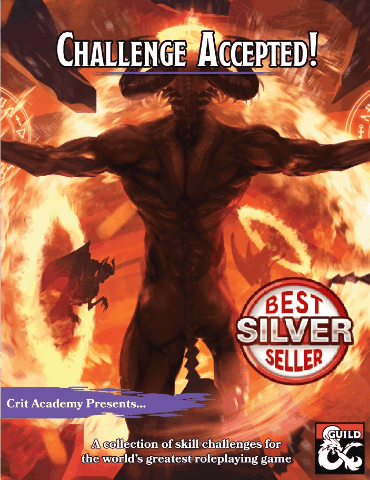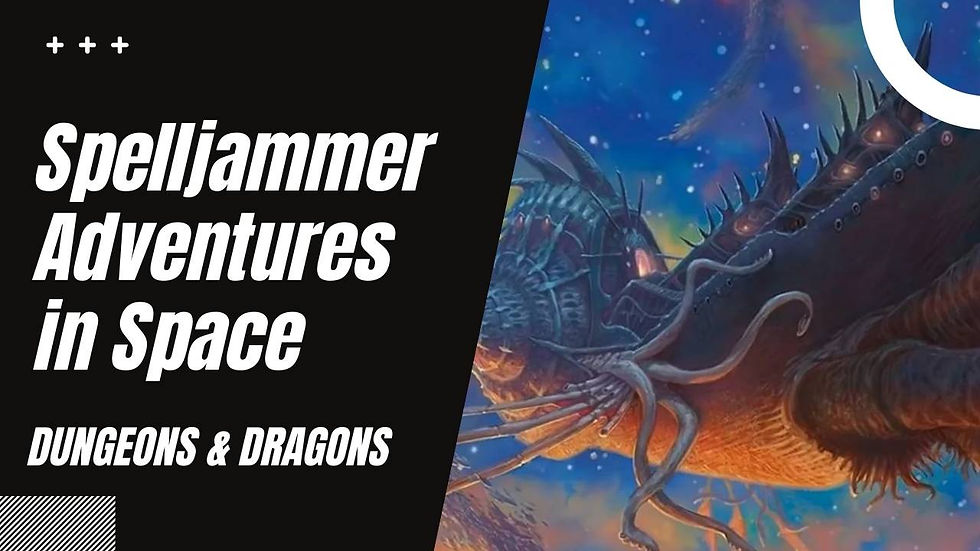Game Pacing - Dungeons and Dragons
- Justin Handlin

- Oct 12, 2020
- 6 min read
Crit Academy discusses the different aspects of game pacing in Dungeons and Dragons.
Pacing is the rhythm of action and story progression that unfolds in encounters over the course of the session.
You can keep tension and focus by having great pacing in your encounters.
Generally speaking, there are three different pacing models. Balanced, Spike, Escalation.
We will be discussing how you can use these models to plan encounters for your gaming sessions.
Players have many choices, this often means they can take on your quests in a different sequence than you intended, so be ready for that. Be flexible, and be ready to modify your encounters on the fly, to fit the pacing model you intend. For example, moving monsters from one planned encounter, to another.
BALANCED PACING
The aim is for a nice balance of combat, role play, and storytelling.
Often alternates fast and furious moments, with slower calmer periods.
Going from an easy combat to a difficult encounter
High dramatic story moments, to spending time shopping and chatting with the locals.
Straight forward dungeons adventures often follow this model, slow, calm periods of exploration, broken by intense combat.
This model works best effectively when you start and end sessions/adventuring day on a high note.
Example: Difficult encounter or dramatic turning points to grab your players’ attention at the outset and end with a cliffhanger, leaving them wanting more.
A party who likes to burn all their resources early on, can often disrupt your pacing. Adding slower periods can ease tension and encourage them to continue forward, instead of taking rests.
Balanced pacing is a versatile model and allows a variety of different encounter types, including combat/ exploration, investigation, puzzles and NPC interactions.
Make sure to give your players a variety of encounters to hold their attention.
SPIKE PACING
This pacing is a single encounter so difficult that the PCs need to use every resource available, as well as solid tactics to overcome the challenge. Often, PCs will only face one such encounter in a session/adventuring day of this model.
Keep in mind, if you plan on this being the only encounter, ensure to use minor build-up and aftermath encounters to serve as rising and falling action points.
Many players love the rush and excitement of a single battle with everything on the line. Where they can use every resource at their disposal.
Spike pacing works best when there is dedicated build up to the event. If you can manage to foreshadow events to come in a dramatic way, the build up can lead to an amazing….release.
The build-up becomes important.
Increase the players’ fear, uncertainty, and tension with clues about the opponents they face.
Ensure that the players reach the spike refreshed and full access to resources, as well as some additional consumables, maybe even a boon.
The spike model works well as a centerpiece of a short adventure, maybe an interruption to a long travel, and being stalked by a beast or assassin.
Afterwards, let them spend the conclusion mulling over the consequences of the outcome, in NPC interactions or in exploration mode.
ESCALATION PACING
In this model, you put the players on a steady upward ramp of increasingly difficult challenges until they reach the top - a dramatic climax featuring a major villain, world-shattering revelations, or both.
The goal of this model is to gradually deplete the characters’ resources so that when they reach the climax, they’re exhausted and face serious trouble, as they are burnt out.
Because the escalation model relies on depleting PC resources, consider depriving rests, for whatever reason makes sense for your game.
Tight deadline, a race across the countryside, or suffering from some sort of curse that prevents rest.
You want to motivate your characters from one encounter to the next without a rest(long or short)
This model works particularly well in games that have strong horror or drama elements.
Ideally, the PCs don’t realize the seriousness of the trouble they face until it’s too late. Then they have to do battle with little or no spell slots, low hit die for recovery or levels of exhaustion that makes a normal encounter, deadly.
The escalation pacing's goal is to build to a terrible climax in which the players themselves fear for their character's lives. It's NOT to wipe the the party or force them to flee in defeat.
The climactic encounter should be big and scary, but it shouldn’t be more than they can handle.
Unearthed Tips and Tricks! We bring you new creative content for you to bring with you on your next adventure!
Character Concept:
Mournful Agony:
This character was out for revenge due to a betrayal. A strong blood lust lead them to wanting to destroy anyone who would protect his enemy.
This character successfully tracked down the enemy, found them hiding out in a cave.
Instead of facing them head on, pushed a barrel of leaky oil into the cave, and set it aflame.
His enemy came running. Just to be slain.
Unbeknownst to the character… someone important to him had been taken captive..and was in the cave at the time of the burning as a prisoner...
Monster Variant: Runt of the Runts:
PJ Sherrill:
Origin: Gazer (Volo’s Guide)
This Gazer has become fed up with all the beholders laughing and taunting him, so he has looked for a way to become better than his tormentors. He found the answer in the great old one. He has 4 levels into warlock, who has chosen the eldritch invocations devil's sight and eyes of the rune keeper.
New Features:
Innate Spellcasting:
Spellcasting DC is 12 and +4 to hit( I changed to keep it within the same CR
30 ft. Telepathy
Two 2nd level spell slots.
Cantrips: Chill Touch, Eldritch Blast, Mage Hand
1st armor of agathys, arms of hadar, charm person
2nd: Crown of madness , misty step
Pact of the Blade: It can use its action to create a pact weapon in it’s telekinetic ray. It’s proficient with it while it wields it.
Devils sight Invocation: See through magical and nonmagical darkness up to 120 feet.
Eyes of the Rune keeper Invocation: It can read all writing.
Reference:
Telekinetic Ray. The gazer can also exert fine control on objects with this ray, such as manipulating a simple tool or opening a container.
Encounter: Falling Pillars
This encounter takes place in a great hall, or a cave in which the enemy is surrounded by vast columns that run from the floor to the ceiling. The enemy can be any monster of villain who is ideally built for strength. The goal is to have the enemy using a lair action to knock over the massive columns on top of the PCs. This will create several dynamic events.
Lots of cover
Line based damage to multiple enemies
As the columns come down, the room begins to collapse
Magic Item:
Listener Stan. J - From old school dmg
Ring of Contrariness
Cursed Item:
This magic ring is cursed so as to make its wearer unable to agree with any idea or statement or action.
Once put on, the ring can be removed only after a remove curse spell is cast upon the individual wearing it. Because of the curse, the wearer will resist any attempts to cast
such a spell. Furthermore, the contrariness ring will have one of the following
additional magical properties:
1-20: Flying Spell: 1 Charge Per day
21-40: Invisibility: 1 Charge Per day
41-60: Levitation: 3 Charges per day
61-70: Shocking Grasp: At will cantrip
71-80: Counterspell at its lowest level: 1 charge per day
81 - 100: Strength becomes 20 1 per day for 1 minute.
Note that contrariness can never be removed from the ring. The wearer
will use his or her own powers, plus those of the ring, to retain it on his or
her finger. The wearer of the ring will never damage him or herself. If, for
example, other characters suggest that the wearer should make certain
that attacks upon him or her are well-defended against, or that he ar she
should not strike his or her own head, the ring-wearer will agree - possibly
attacking or striking at the speaker's head - because obviously the
result must be contrary in this case.
Dungeon Master Tip: Building on the Past
Great encounters build on information the PCs already have from previous encounters.
You can create better encounters by foreshadowing what is it comes in the future.
Introducing information about an encounter ahead of time can help to build anticipation or apprehension.
Example: If the heroes know the epic battle in a lizardfolk filled adventure features a brutal and savage Lizardman leader and his violent guard drakes. Lizardmen in previous encounters could call him by name and speak fearfully of the Lizardman. When a lizardman suggests running away from the heroes’ onslaught, another says, “No! Are you mad? Solgoss will feed us to his pets if we flee!”
Stuff like this can lay the groundwork for future encounters.
Player Tip: Don’t be a Dick
Make sure to get paid for your service! Did you do a service for a character? Write a receipt and deliver it to them.
If you have any feedback, unearthed tips and tricks, or topics you would like us to discuss, please send them to us. You can email them to us at critacademy@gmail.com or find us on Twitter and Facebook @critacademy.
We hope you’ve enjoyed your experience here at Crit Academy. If you did, you can help others find the show by leaving a hopefully 5-star review on iTunes. Or just send us a message telling us how much you enjoy the show.
Also, be sure to give us a like and a share!
Make sure to subscribe to our show at www.critacademy.com, and Youtube so we can help you on your future adventures as well as a chance to win cool prizes each and every week. Make sure to check out our fellowship members as well.















Comments